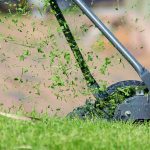Does your lawn look a little sad lately? Yellowing grass, limp plants, or blooms that just will not show up can be frustrating, especially if you are investing time, money, and care into your yard. Whether you are a homeowner dreaming of a lush, green lawn, a landscaper looking to deliver perfect results, or a garden enthusiast working on that tomato harvest, soil testing might just be the secret ingredient you are missing.
This straightforward but often-overlooked process can take the guesswork out of lawn care and gardening. Curious to see what soil testing is all about? Stick around, and you will learn how this simple step can completely transform your outdoor spaces and give nature the boost it needs to thrive.
What Is Soil Testing And Why Does It Matter?
At its core, soil testing is the science of understanding what is happening beneath the surface of your lawn or garden. Think of it as a health checkup for your soil. A soil test analyzes factors like pH levels, nutrient content, and organic material. These elements can make or break the health of your plants.
Why does it matter so much? Well, your soil is the foundation of everything you grow. Fertilizing blindly, watering inconsistently, or hoping plants thrive without understanding what your soil needs can lead to wasted effort and disappointing results.
Benefits Of Conducting A Soil Test
If you are not already convinced, here are some fantastic reasons to get a soil test done for your lawn and landscape:
- Save Money On Fertilizers: Know exactly what nutrients your soil lacks so you do not waste money on the ones it does not need.
- Promote Plant Health: Healthy soil equals healthy plants. Soil testing helps create the perfect growing conditions.
- Reduce Environmental Impact: Prevent over-fertilizing and runoff that harms nearby ecosystems.
- Boost Lawn And Garden Growth: A clear understanding of your soil’s nutrient profile helps optimize growth.
- Improve Soil Balancing: If your soil’s pH level is off, plants will not absorb nutrients properly. A soil test solves this problem.
How Soil Testing Works (And How You Can Do It)
The good news? Soil testing is not rocket science. Here is how you can get started:
- Collect Soil Samples: You will need to collect soil from several areas of your yard or garden using a garden trowel or soil probe. Make sure to dig down to about 6 inches for accurate results.
- Mix The Samples: Combine your samples in a clean bucket to create an even mix, removing large rocks or debris as you go.
- Send It Off Or DIY: Most gardeners choose to send their soil sample to a lab for in-depth analysis. However, some basic soil testing kits can help you measure pH, nitrogen, and phosphorus levels at home.
- Review Results And Plan: Once the analysis is complete, you will get a detailed report outlining your soil’s condition. From here, you will know exactly which amendments or fertilizers your soil needs.
Tip: Soil testing every 2 to 3 years is more than enough to keep your lawn and plants thriving long-term.
The Science Behind Why It Works
Plants thrive because they absorb nutrients and water from the soil. However, if the soil is acidic, missing essential nutrients, or overly compacted, your plants do not stand a chance.
For instance, nitrogen promotes leafy growth. Phosphorus improves root development. Potassium increases a plant’s strength and resistance. The wrong levels of even one of these nutrients can slow everything down. Soil testing takes out the guesswork and ensures plants get exactly what they need in the right proportions.
Consider your soil’s pH level too. Certain plants, like azaleas, prefer acidic conditions, while others, like spinach, love alkaline soil. Soil testing lets you fine-tune this balance and determine what amendments will provide the right environment for your unique plants.
When And Where To Test Your Soil
It is a good idea to test your soil in early spring before you start any planting. This gives you time to adjust the conditions before things start growing. If you have never soil-tested before, a one-time test can give you a baseline for understanding your yard’s overall condition.
Additionally, test areas with specific problems like bald spots in your yard or garden beds with wilting plants. These tests can give targeted answers to help address “trouble zones.”
Real Transformation For Your Lawn And Landscape
Sometimes the smallest changes can lead to the biggest transformations. With soil testing, you can finally understand your lawn and garden from the ground up—literally. You will make informed decisions, improve the look and health of your plants, and potentially save time and money in the process.
Whether you are aiming for a beautifully manicured lawn, a flourishing vegetable garden, or an outdoor space you can be proud of, soil testing is the key. A few simple tests could be the difference between bare patches and vibrant greenery.
Take The Next Step
Your lawn and garden deserve more than guesswork. Start thinking about soil testing as your first step to bringing your greenery dreams to life. With a soil test in hand, you will know exactly what your plants need to grow their very best.
Happy gardening—and may your soil always be rich and balanced!







